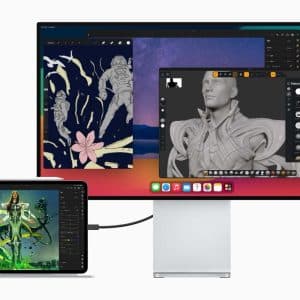
Wearing a virtual-reality headset is a new experience for soldiers
By mounting cameras on the outside of the tank, soldiers were able to create a 360-degree feed to the Oculus headset, worn by the driver.
The device – still just a prototype – is much cheaper than conventional military camera systems.
But the picture quality is not yet good enough for operational use.
The army began testing the headset in 2013 and in April of this year tried out the latest iteration of the hardware.
“It is a partial success,” project leader Maj Ola Petter Odden told the BBC.
“The concept is sound, but the technology isn’t quite there yet. The picture quality is good for 10-15m [30-50ft] – but after that it is difficult to distinguish details, for example whether an opponent is carrying a weapon.”

The view from inside the tank
Now he plans to wait until next year for further tests.
“There will be better hardware and we can test it again then,” he said.
The virtual-reality headset hit the headlines when Facebook bought the company behind it – Oculus VR – for $2bn (£1.1bn) in March.
To date neither has said much about what they plan to do together, but this week Oculus VR chief executive Brendan Iribe talked about hopes “to build a one billion player MMO”.
Massively multi-player online games (MMO) using virtual reality (VR) would be the “holy grail” for the technology, he told delegates at the TechCrunch Disrupt conference.
Facebook’s large audience would help make such a platform possible although such an enormous player base would require a much larger network than existed currently, he said.
And while Oculus is starting off with a big focus in gaming he said that a lot of where VR would go in the next decade would be about “face-to-face communication and social”.
BBC News












